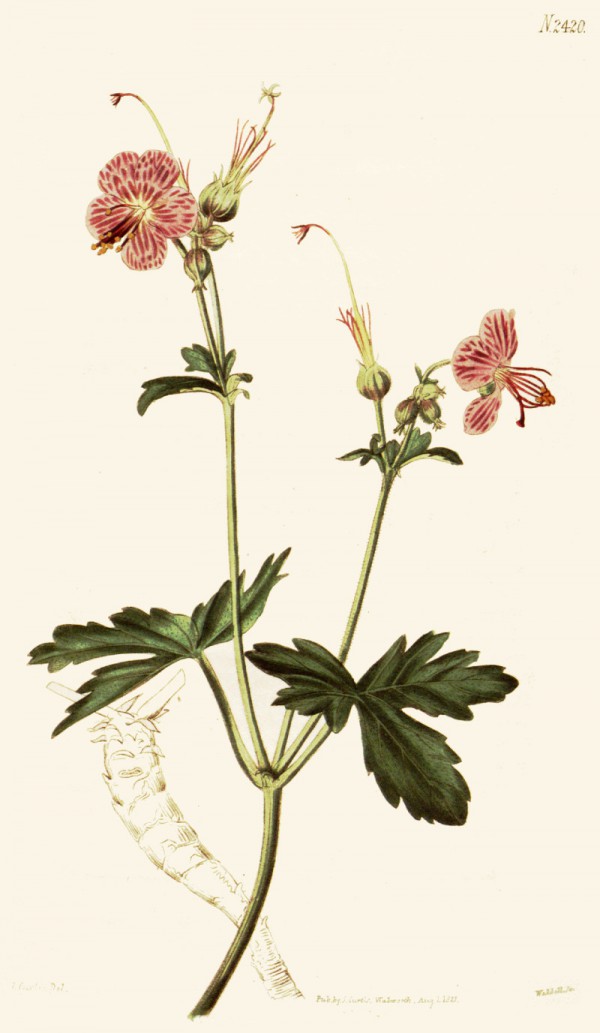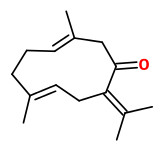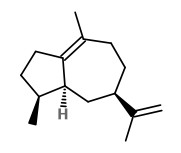Geranium macrorrhizum L. - Geraniaceae - bigroot geranium, Bulgarian geranium, rock crane's-bill, Balkan-Storchschnabel, Großwurzeliger Storchschnabel, Felsen-Storchschnabel
„… attractive perennial, Geranium macrorrhizum has a thick, succulent rhizome (underground stem) and soft, deeply divided, aromatic leaves. The flowers are produced in the spring and summer, and have a reddish calyx and pink, reddish-purple or rarely white petals… In Bulgaria, G. macrorrhizum is widely grown as a cultural symbol associated with health and good luck. It is the source of Zdravetz oil [german: Zdravec-Öl], which is used in traditional medicine as both a stimulant and as a carminative, and is also used as a fixative in perfumery. Zdravetz is a Bulgarian word meaning ‘health’. The essential oils found in both the aerial parts and rhizomes have been shown to have antibacterial activity.“ http://www.kew.org/science-conservation/plants-fungi/geranium-macrorrhizum-rock-cranes-bill
„The pleasant floral-herbaceous-smelling germacrone… was originally isolated by Heinrich Wienhaus as the principal odorant of zdravetz oil…“
[Scent and Chemistry, Günther Ohloff, Wilhelm Pickenhagen, Philip Kraft, Wiley-VCH, 2012, 325]
„The volatile hydrodistilled compounds from aerial parts and rhizomes of the ethnopharmacologically highly valued plant species Geranium macrorrhizum L. were screened for their antimicrobial activity in disc-diffusion and microdilution assays. The assays pointed out to a very high and selective activity of the oils against Bacillus subtilis with minimum inhibitory concentrations (MIC) of 0.4-1.0 μg/ml. This prompted us to perform detailed compositional analyses of the oils. GC and GC/MS analyses allowed the identification of 283 constituents. The oils consisted mainly of sesquiterpenoids, the main ones being germacrone (49.7% in the oil from aerial parts) and δ-guaiene (49.2% in rhizome oil). Significant qualitative and quantitative compositional differences in the oils from the two plant parts were observed. Further antimicrobial testing enabled us to determine that germacrone, the major constituent of the oil from aerial parts, was not the sole agent responsible for the observed activity.“
[Geranium macrorrhizum L.(Geraniaceae) essential oil: a potent agent against Bacillus subtilis., Radulović, N.S., Dekić, M.S., Stojanović‐Radić, Z.Z., Zoranić, S.K., Chemistry & biodiversity, 7(11), 2010, 2783-2800]
„The leaf methanol extract displayed a very strong antibacterial activity, especially against Staphylococcus aureus, with low minimal inhibitory and bactericidal concentrations. These results justify the frequent use of this plant species in folk medicine. Besides the known astringent effect, one can expect that the observed antimicrobial activity against several human pathogens contributes to the wound healing properties of this plant.“
[Radulović, N. S., Stojković, M. B., Mitić, S. S., Randjelović, P. J., Ilić, I. R., Stojanović, N. M., & Stojanović-Radić, Z. Z. (2012). Exploitation of the antioxidant potential of Geranium macrorrhizum (Geraniaceae): hepatoprotective and antimicrobial activities. Natural product communications, 7(12), 2012, 1609-1614]
„Germacrone showed antiviral activity against the H1N1 and H3N2 influenza A viruses and the influenza B virus in a dose-dependent manner. The viral protein expression, RNA synthesis and the production of infectious progeny viruses were decreased both in MDCK and A549 cells treated with germacrone. In a time-of-addition study, germacrone was found to exhibit an inhibitory effect on both the attachment/entry step and the early stages of the viral replication cycle. Germacrone also exhibited an effective protection of mice from lethal infection and reduced the virus titres in the lung. Furthermore, the combination of germacrone and oseltamivir exhibited an additive effect on the inhibition of influenza virus infection, both in vitro and in vivo. Our results suggest that germacrone may have the potential to be developed as a therapeutic agent alone or in combination with other agents for the treatment of influenza virus infection.“
[Germacrone inhibits early stages of influenza virus infection., Liao, Q., Qian, Z., Liu, R., An, L., Chen, X., Antiviral research, Vol.100(3), 2013, 578-588]
Besides germacrone which comprises about half of the oil, 4,5-epoxygermacrone and 1,10-epoxygermacrone could be isolated (and structures confirmed by synthesis) from the essential oil of aerial parts of Geranium macrorrhizum L. (Geraniaceae). Their antimicrobial activities against Bacillus subtilis and Pseudomonas aeruginosa was very high (compared to tetracycline).
[Further antibacterial Geranium macrorrhizum L. metabolites and synthesis of epoxygermacrones., Radulović, N. S., Zlatković, D., Dekić, M., Stojanović‐Radić, Z., Chemistry & biodiversity, 11(4), 2014, 542-550]

Curtis’s Botanical Magazine, vol.50, t.2420 (1823)
http://plantgenera.org/species.php?id_species=462477
Geranium macrorrhizum © Rolf Marschner (2018), www.botanische-spaziergaenge.at


